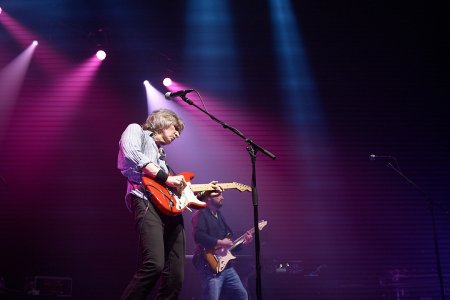Of course crop factors are a real thing. They're a way to easily understand what the angle of view a lens with a given focal on one camera will be on another camera. Because a huge number of photographers are most used to 35mm film (and more recently "full frame" digital) cameras, using that sensor/film size as a common reference makes great sense.
I have no real idea what the angle of view in degrees is for the lenses I use is, but I definitely know intuitively how a 50mm lens looks on my 35mm cameras. Just because people in the past were more likely to think in those terms doesn't mean that people thinking in different terms is somehow wrong or not real.
"A huge number of photographers" -- I would guess nearly 100% of new photographers -- have come into and are coming into photography through using phone cameras and finding they enjoy image-making enough that they want to use a more interesting camera. (Side note: Pixii founder/CEO David Barth has stated that an explicit design goal for Pixii was to create "a camera that would be interesting to use.")
Crop factors are completely useless to these photographers -- or almost anybody else, really. What photographers need to know is
what's going to be in the picture. They don't need to know what would have been in the picture if they had been using a particular camera/lens combo that was popular back in Grandpa's day.
It makes absolutely no sense to force photo newcomers to look up hard-to-find sensor and lens specifications, then do high-precision math to convert them to one obsolete-film-camera "equivalent", then yet again to another obsolete-film-camera "equivalent" to find out, for example, how the picture they take with their newly-acquired Yashicamat 124G (or whatever) compares to what they're used to seeing through their phones. On the other hand, if they look up the angles of view (readily available and easy to compare) they'll be able to see exactly what the difference means
in terms of real-world photography.
Incidentally, that's another reason angles of view are useful and crop factors are not: Knowing your lens' angle of view makes it easy to answer questions such as "If the stage is 20 feet wide and I'm shooting with Camera X and Lens Y, how far away do I need to be to include the whole band?" Crop factors are completely useless here.
Admit it: The only reason we still talk about crop factors on RFF and other nostalgia-centric forums is that most of us are crabby old guys who learned photography on film cameras and want to force photo newcomers to do things our way. We imagine that this will make them want to sit at our feet and fawn on us and bow down to our superior experience and arcane knowledge.
But they don't and they won't. They'll think the whole thing is stupid and walk away. And they're right.
PS -- I'll admit that crop factors are useful for direct conversions: "What Simplex-format accessory viewfinder do I need to use a lens of 90mm marked focal length on my Epson R-D1?" (90 x 1.53 and round; job done.) On the other hand, if you find a cool Linhof finder that's marked for 4x5 you'll need to jump through more hoops... or make things easy on yourself by comparing the angles of view.






